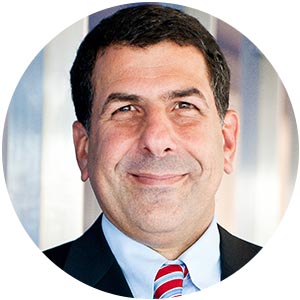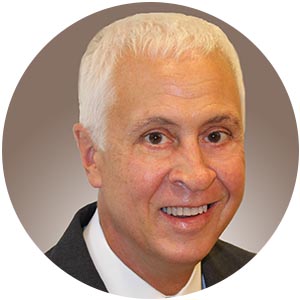Corporate treasurers are parking more cash in separately managed accounts, which can be customized to their investment needs—and often beat money-market-fund returns.

Many corporate treasurers and CFOs struggle with a vexing dilemma: Cash balances have never been higher, yet interest rates have never been lower. So a growing number of corporates, big ones in particular, are turning to third-party asset managers, engaging them to invest their short-term cash in separate accounts. These accounts offer to squeeze out a little bit of extra yield while ensuring that the cash is invested precisely the way the company wants it to be.
“Corporate interest in the separate account space first occurred due to the pervasive low-interest-rate environment, which was the original catalyst as corporates with core cash were trying to find yield,” says Joe Sarbinowski, managing director and global head of institutional liquidity management distribution at Deutsche Asset & Wealth Management.
A separate account differs from a traditional mutual fund or money market fund in that an investor’s assets are not commingled with those of other investors. That allows the manager to create an investment strategy customized to fit the needs of a single investor.

For example, a corporate with $500 million in a money market fund may not need $200 million of that for six months or a year. “So they might want to think about putting that into a separate account, which we can manage out on the maturity curve a bit longer than we would in a fund,” says Charles Cardona, CEO of BNY Mellon Cash Investment Strategies. “This way, they get a higher level of incremental yield.”
Asset managers say demand for separate accounts among their corporate cash management clients is on the upswing. At BNY Mellon, Cardona says, “we have seen continuing and modestly growing interest in separate accounts among corporate treasurers.” HSBC Global Asset Management is noticing the same trend, says Hugo Parry-Wingfield, the firm’s head of liquidity product for Europe, the Middle East and Africa.
HIGHER MINIMUMS
They’re not for everyone, though. Because separate accounts require much more work on the manager’s part than mutual funds, a manager won’t offer such a vehicle to a client without a significant level of investment. The precise amount varies, but a $50 million minimum is not unheard of. For that reason, larger corporates are the most likely clients for a separate account. Fees tend to be about the same as they are for money market funds, though they often come down for larger balances because the manager can take advantage of economies of scale.
And even the biggest corporates probably won’t bother with a separate account if there’s not a high degree of certainty they will get a decent yield beyond what they could get with a lower-risk money market fund.
“It varies from company to company, based on the company’s DNA and the source and use of its cash,” Sarbinowski says. “When a corporate goes out and adopts a separate account, it wants to make sure it gets a meaningful amount of return, beyond what it can get from a money market fund.”
Different companies will also have different ideas of “meaningful” return. “But if you’re talking about 70 or 90 basis points, or even 30 to 40 basis points, that may make it worth the effort for the investor,” Sarbinowski says. “When the yield curve was flat and the credit curve was compressed, you might have received only 10 extra basis points, and it probably wasn’t worth the effort. But when you start getting those types of returns for incremental risk, it may be worth it.”
What corporates want from an asset manager is a structured and methodical and globally consistent investment process.
Hugo Parry-Wingfield, HSBC Global Asset Management
Beyond the search for yield, upcoming regulatory changes may well spark more interest in separate accounts, says Western Asset Management portfolio manager Mike Zelouf. In October, new Securities and Exchange Commission rules will come into force affecting redemption gates and fees for money market funds. The new regulations will also require that prime money market funds’ net asset value be variable, rather than keeping the fixed NAV corporates have been used to for years. At least in part, corporates are shifting more assets into separate accounts to “avoid the constraints that will be imposed by the SEC regulations,” Zelouf says.
Another force driving money out of straight cash and into separate accounts is the so-called negative interest rate, Zelouf adds—when banks actually charge customers to deposit cash. “That’s forcing corporations to look for alternatives,” he says.
The potential market for separate account managers is huge. As of September 30, 2015, the S&P 500 companies held a combined $1.45 trillion in cash and short-term investments on their balance sheets, according to research firm FactSet. Nor is the opportunity only US-based. The 100 biggest companies in the UK had $84 billion in cash and short-term investments, Capita Asset Services says, four times as much cash as those companies held prior to 2008.

What do corporates look for in an asset manager? Among other things, they want a provider with scale, experience in risk management and a “structured and methodical—and globally consistent—investment process,” says HSBC’s Parry-Wingfield. Beyond these qualifications, Sarbinowski adds that managers working with corporates need to display “sensitivity and familiarity” around a range of issues. “What are the goals?” he asks. “Is it total return or is it book yield? Does it need to be liquid on a certain date, or is it essentially buy and hold?”
More practically, the corporate must make sure the manager understands accounting rules. “For instance, taking a gain or a loss at the end of a quarter may change [the company’s] earnings per share, depending on the size of the portfolio,” according to Sarbinowski.
While corporates are looking for more-customized solutions for their cash management, most don’t want to take on too much additional risk in their quest for yield, experts say. “The more mainstream investment tends to be investment-grade or better credit,” Sarbinowski says, “and you usually don’t see duration beyond two years.” Some corporates will look to high-yield bonds to grab a little extra return, “but the company has to really be comfortable with the volatility that comes with that,” he says.
Western has seen some clients move money into ultrashort strategies, Zelouf says, “with perhaps slightly longer maturity than traditional prime funds—maybe out to 90 days—which can give you a little bit more yield.”
BNY Mellon’s Cardona says an especially popular strategy lately has been “matched funding,” where the manager matches the portfolio’s maturity to the client’s anticipated liquidity needs. “The investor knows exactly what they will need in incremental yield and exactly when it will be available to them,” he says. That kind of precise customization is not possible in a commingled fund and helps explain the attractiveness of separate accounts.



